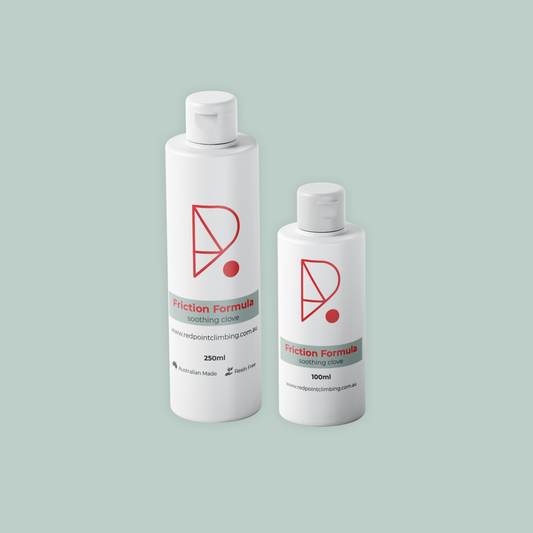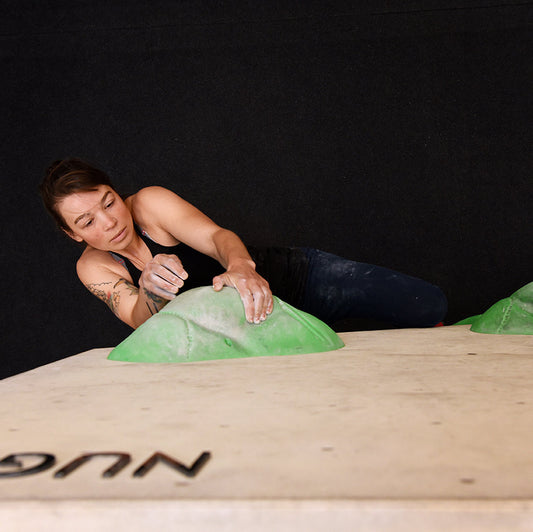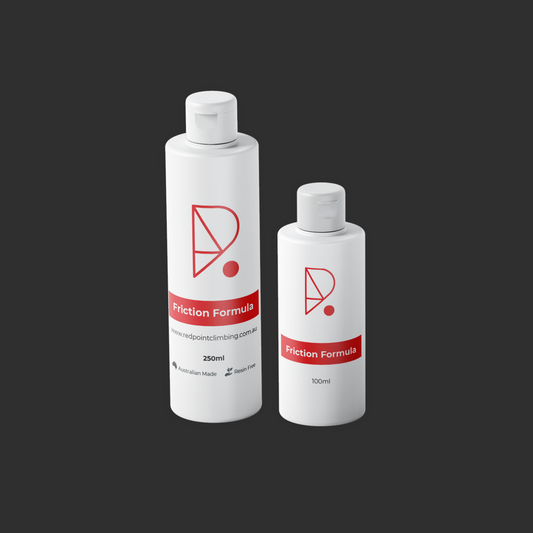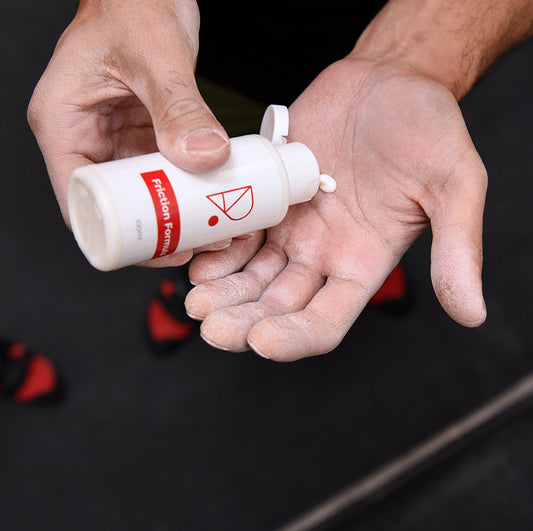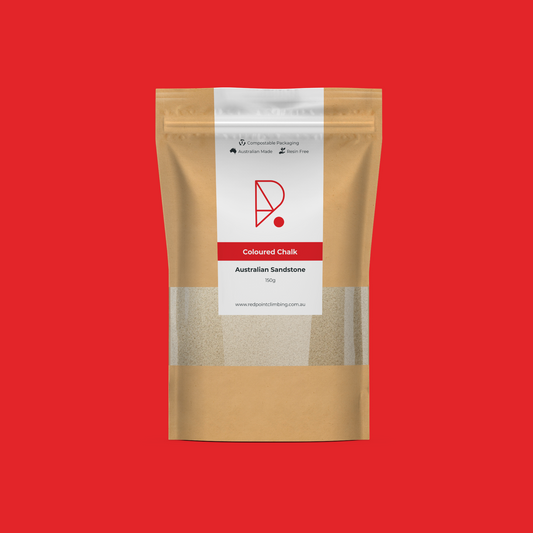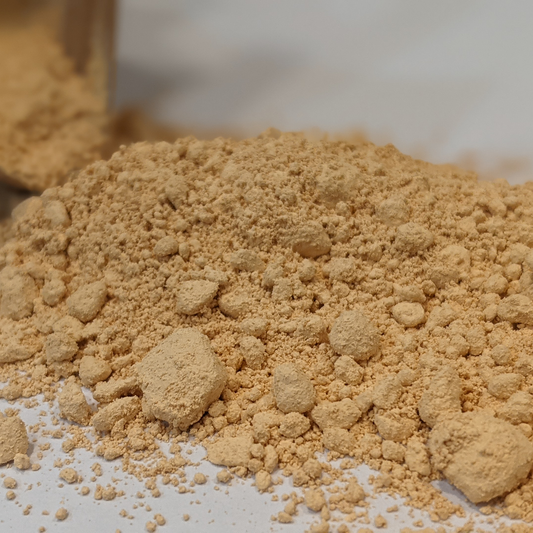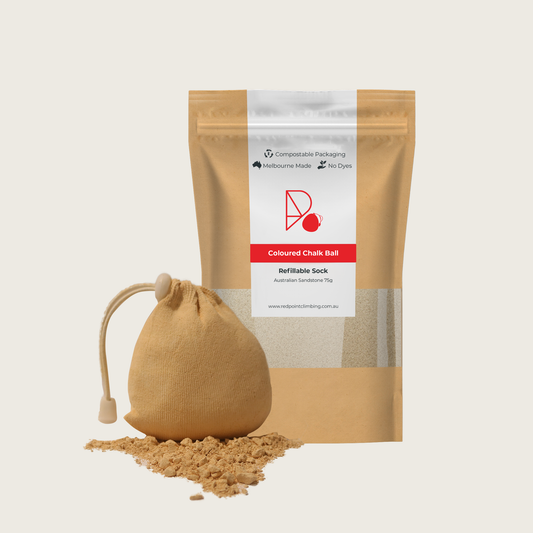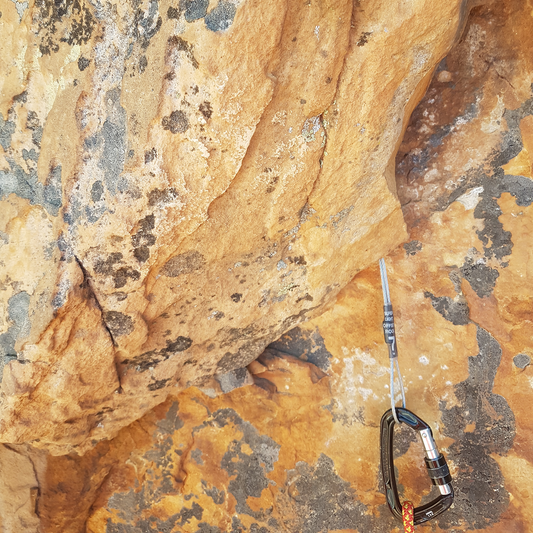
TLDR;
- Liquid chalk provides longer lasting grip
- Liquid chalk leaves less excess chalk on holds or in the air
- Loose chalk leaves marks on our natural rocks and environment
Loose chalk is attributed to the American climber/gymnast/mathematician John Gill, who used his skills from gymnastics to establish boulder problems and brought along with him gymnastic chalk to help with grip. Although loose chalk has been a benefit to climbers and boulderers all over the world, more and more people are becoming concerned by the unnatural white marks left behind on our not so white rocks. The chalk dust left behind on indoor gym holds also makes the holds more slippery.
Liquid chalk is an alternative to loose climbing chalk that not only provides longer lasting grip, but also leaves less mess around. Here are five reasons why you should add liquid chalk to your gear bag.
- Air pollution: If you have climbed or bouldered indoors, you’ll instantly recognise that distinct mustiness in the air from lots of chalk particles floating around. Bouldering gyms are especially impacted due to the higher volume and density of boulderers as well as a lower roof.
- Slippery holds: Loose chalk left behind on holds plus moisture from many pairs of hands equals slippery holds that have to be brushed down more often. We’ve all been there - plucked up the courage to reach for a hold only to slip and fall because the hold is mucky.
- Less chalking up: Liquid chalk creates an effective base layer of chalk that lasts a lot longer than loose chalk. This means you’ll find yourself chalking up less when you are climbing. When bouldering, instead of chalking up before every climb, you can reduce this down to every 2nd or 3rd climb depending on how long you spend on each climb.
- Better for our environment: When used correctly, liquid chalk stays on the hand and doesn’t leave excess chalk behind on the rocks.
- For extra sweaty hands: As many as 3 in every 100 Australians (including myself) have what is known as Hyperhidrosis, which leads to excessive sweating in the hands and feet. This has a huge impact on their climbing ability. Liquid chalk has ingredients that are designed to dry your hands in addition to depositing the layer of chalk.
Bonus reasons to use liquid chalk:
-
Hand sanitiser! Liquid chalk typically contains the same amount of alcohol as most hand sanitisers. We all know why this is important in this time of Corona.
-
Deep water soloing: When climbing unaided above deep water, you will most likely get wet, a condition that renders loose chalk ineffective. On the other hand, liquid chalk is very effective at drying hands even when wet. When deep water soloing, always carry a small bottle of liquid chalk with you and leave the bottle at the start of the climb. Also avoid bringing chalk balls if you plan on falling in (you’ll have to watch helplessly as it floats away with the waves).

